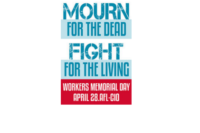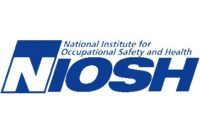Across the U.S., Workers’ Memorial Day events honor the fallen
Theme this year: toxic chemical exposure in the workplace

 Today is Workers’ Memorial Day, on which individuals who have died on the job are honored in ceremonies all over the country.
Today is Workers’ Memorial Day, on which individuals who have died on the job are honored in ceremonies all over the country.
At the U.S. Department of Labor headquarters in Washington, D.C., Secretary Perez, Assistant Secretary of Labor for Occupational Safety and Health Dr. David Michaels and Assistant Secretary of Labor for Mine Safety and Health Joseph A. Main will deliver remarks focusing on the hazards of toxic chemical exposure in the workplace – this year’s theme.
Attendees will then proceed to the memorial garden for a brief ceremony.
Flowers in the river
Deputy Assistant Secretary of Labor for Occupational Safety and Health Jordan Barab will attend a memorial event in Philadelphia, followed by a casting of flowers into the Delaware River. OSHA’s Manhattan Office will host an event at St. Patrick's Cathedral to read the names of construction workers killed over the past year in New York City.
Other agency-related events will take place across the nation, from Florida to California, Massachusetts to Georgia.
Beyond the speeches: safety classes
In Texas, events will go beyond speeches and wreaths, to free safety training courses held by the University of Texas at Arlington (UTA).
From 8 a.m. - 5 p.m., attendees can take classes on construction industry hazards, confined spaces safety, machine safeguarding, fall hazard awareness, accident investigation and bloodborne pathogens, among other topics.
A Workers’ Memorial Day website reminds visitors of the people behind the statistics with a home page photo array of individuals who died from workplace accidents, with their names, ages and how they died.
History of Workers’ Memorial Day
Canada passed the “Day of Mourning” Bill C-223 in 1989, making it the first country to observe a workers memorial day. In 1989, the AFL-CIO adopted April 28th as Workers Memorial Day in the U.S. because it was OSHA’s anniversary date. The day is now observed around the world.
Many invoke, for the day, a motto attributed to Mary Harris (“Mother”) Jones, a schoolteacher who became a prominent labor organizer. Jones was called "the most dangerous woman in America" for her success in bringing together mine workers and leveraging their collective force against mine owners for better conditions and wages..
Outraged by the treatment of child workers in mines and silk mills, she once held a march from Philadelphia to the home of then-president Theodore Roosevelt in New York to demand better enforcement of child labor laws.
Jones uttered the phrase still used by occupational safety advocated more than a century later: "Pray for the dead and fight like hell for the living."
Looking for a reprint of this article?
From high-res PDFs to custom plaques, order your copy today!







